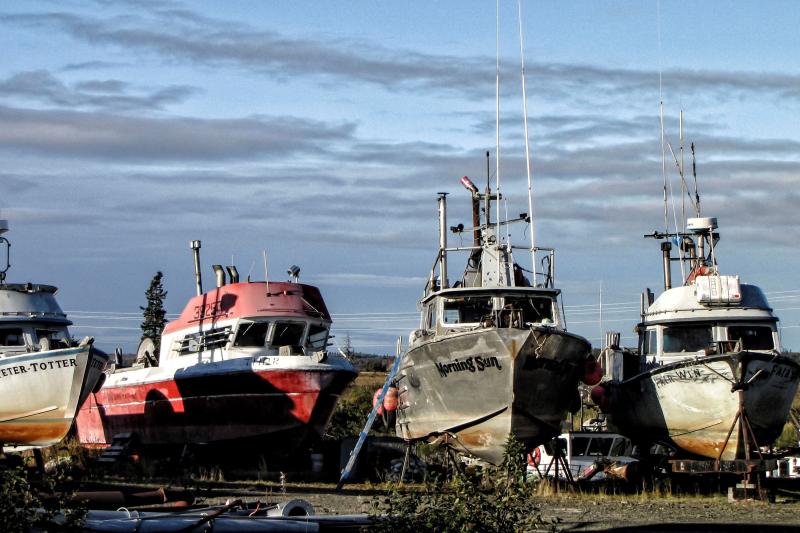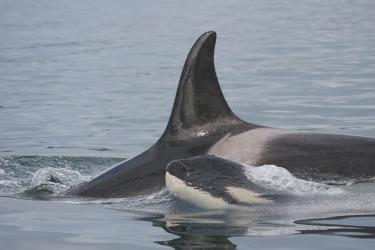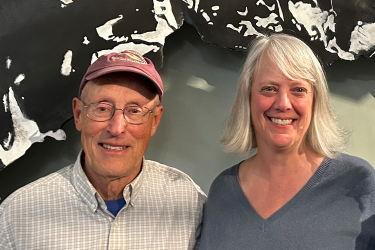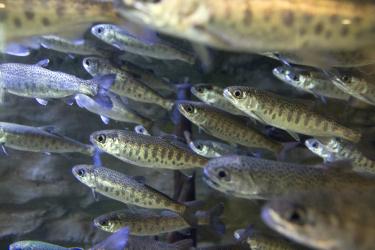Commercial fisheries are a valuable part of the U.S. Blue Economy. Our fishing industry helps ensure food security, provides jobs, and supports the well-being of coastal communities.
But today many U.S. commercial fishermen are on the cusp of retirement. This “graying of the fleet” poses concerns for industry resilience and national food security if there are not enough young fishermen willing and able to take their place.
NOAA Fisheries is working to encourage and support the next generation of U.S. commercial fishermen. New research is the first to examine and compare the generational crisis across the fishing and farming industries. Based on their findings, the research team recommends steps to help young fishermen, modeled after long-established national programs that have successfully helped beginning farmers.
“We wanted to look at issues across industries to see if solutions used to help new farmers could help young fishermen,” said study lead Marysia Szymkowiak, NOAA Fisheries Alaska Fisheries Science Center.
“We were surprised at the extent to which they overlap. The parallels are really stark. Given that, we can really learn a lot from how these issues are being addressed in farming.”
New fishermen and farmers face formidable challenges to entry and success. Fishing and farming are both highly risky businesses—subject to weather, variable harvests, uncertain markets, and climate change. At the same time both industries require increasingly high startup costs, e.g. to purchase farmland, fishing boats, fishing permits, gear, and constantly evolving technology.
However, while challenges are strikingly similar between farming and fishing, the level of national support is very different. In contrast to the decades-long national-level recognition of beginning farmer issues, the aging of the fishing industry was acknowledged only in the 2010s. Documentation of this issue grew out of Alaska, where the U.S. fishing fleet is relatively new.
“Our findings show how relatively little there is to help young fishermen compared to farmers,” Szymkowiak said. “In farming there is a holistic, centralized, national-level approach. In fishing it’s been from the ground up. They’ve been coming up with their own ways to address the problem with minimal funding through small programs across the country.”
Based on their findings, the team recommends specific steps that can help support young fishermen entering the industry:
- Develop a national census for fisheries participants
- Develop a program that directly targets new entry issues comparable to the Beginning Farmer and Rancher Development Program
- Implement federal fisheries insurance programs inclusive of diverse target fisheries
- Develop comprehensive low-interest loan programs modeled after the Farm Service Agency loan programs
By addressing the issues facing new fishermen now, we can help build a new generation of fishermen that is ready and capable of fishing national waters in the future.
“We need to think about the generational gap in fisheries as we have in farming,” Szymkowiak said. “Fishermen are facing similar issues to young farmers. We need to equip them similarly.”
Alaskan partners in building the next generation of fishermen:
- Alaska Longline Fishermen’s Association Young Fishermen’s Initiatives
- Alaska Marine Conservation Council Alaska Fishermen’s Network
- Alaska Sea Grant Alaska Young Fishermen’s Summit
- Bristol Bay Regional Seafood Development Association Crew Training Program
- Unalaska Native Fishermen’s Association Deckhand Training Program
- Bristol Bay Regional Career and Technical Education Program






